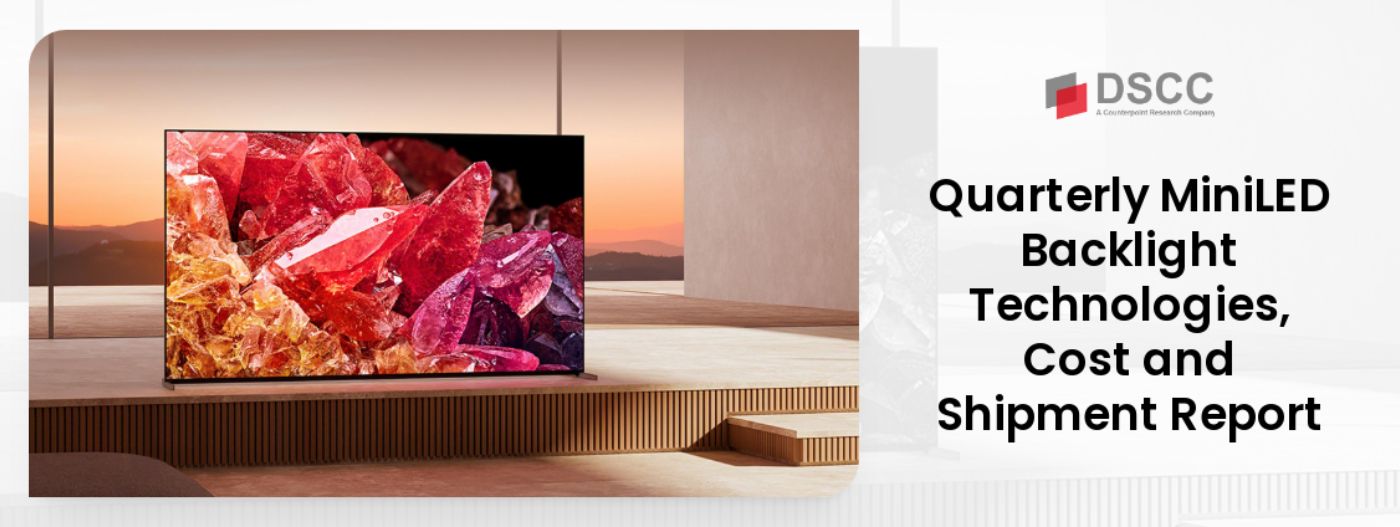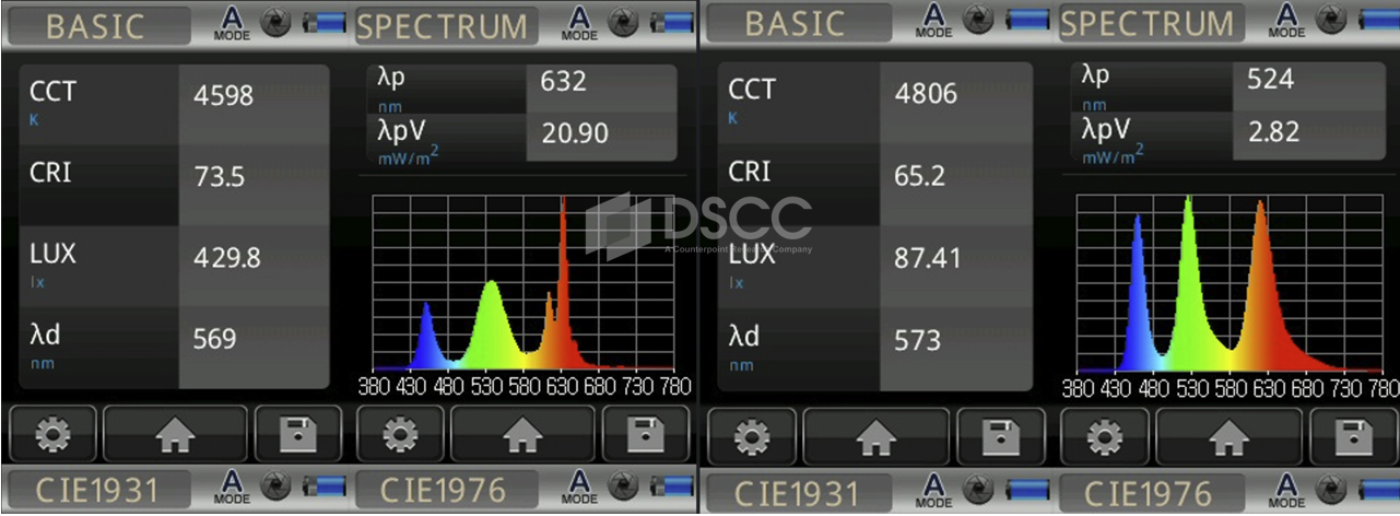新型MacBook ProがApple製品で初めて量子ドットを採用
これらDSCC Japan発の分析記事をいち早く無料配信するメールマガジンにぜひご登録ください。ご登録者様ならではの優先特典もご用意しています。【簡単ご登録は こちらから 】
冒頭部和訳
Appleの新型MacBook Pro M4が同社初の量子ドット採用製品であることが判明した。Appleはこのことを公表していないが、DSCCは分光計を使用し、この新たなMiniLEDベースのノートPCが量子ドット強化フィルムを採用していることを突き止めた。この情報をXとLinkedInに掲載した後、Appleの社員とNanosysの元経営陣からこの事実の追加確認を得た。元Nanosys社長兼CEOのJason Hartlove氏は、以前は言うことができなかったがDSCCが突き止めたことを喜んでいると述べ、同社の量子ドットが採用されていることを示唆した。同氏はまた、Appleに最初にアプローチしたのは15年前だったとコメントしている。
New MacBook Pros Are the First Apple Product to Use Quantum Dots
DSCC discovered that that the new Apple M4 MacBook Pros are the company’s first products to use quantum dots. Although Apple has not revealed this publicly, DSCC has determined that these new MiniLED-based laptops use a quantum dot enhancement film through the use of a spectrometer. After posting this information on X and LinkedIn, we received additional confirmation of this fact from Apple employees and former Nanosys management. Former Nanosys President and CEO Jason Hartlove indicated that he couldn’t tell us before and was glad we figured it out, signaling that it was their quantum dots being used. He also commented that they first approached Apple 15 years ago.
Bob O’Brien used a portable spectrometer product, the UPRtek MK350N Premium, for the measurements. At the Apple store in Ann Arbor, MI, Bob measured several Apple products. A focus on the red peak shows the differences between these two technologies. The MacBook Air shows the characteristic peak of the KSF phosphor at 633nm, and a secondary peak at about 610nm. The new MacBook Pro features the characteristic narrower peak for green quantum dots vs. the wider green SiAlON profile.
Apple was one of the last companies buying IT displays to adopt quantum dots. There were several hurdles that reportedly had to be overcome. First was the use of cadmium (Cd). This was a non-starter for Apple. Second, the Cd-free films were at a significant efficiency disadvantage vs. KSF phosphor films. Recently however, Cd-free films have matched the efficiency of KSF phosphor films. Third, quantum dot film costs have continued to come down with significantly lower barrier film requirements or even barrier free solutions now available. On the other hand, licensing fees are believed to be high on KSF films which now gives QDs a potential advantage. In the case of this product, we do not believe it is a barrier free solution since it is targeting the high end of the market and a long lifetime is desired. A multi-functional film is likely used with good barrier qualities. Fourth, motion performance and color ghosting with KSF have reportedly been an issue for Apple products in certain applications, so they were able to overcome this concern by moving to QDs. “Cyan flash” was reportedly a concern by certain users of Apple MacBook Pro’s and other Apple displays who may be using it as a reference monitor for video editing, as a reference monitor or for gaming, etc.
What is cyan flash? When the MiniLED screen is dark and a bright object suddenly appears, two things happen. First, the LEDs click on, and the LCD shutters open at the same time. The LCD takes several milliseconds to open. Meanwhile, the blue LED turns on in nanoseconds, the green beta SiAlON phosphors turn on a couple microseconds later while the red KSF phosphor takes >8 milliseconds to reach full brightness. What can be seen for those 8ms is a blue + green flash = cyan. You can see the cyan flash in the Netflix show Ozark below when the scene cuts from a dark image to a white refrigerator where there is a bright cyan flash.

Apple reportedly evaluated quantum dots way back in 2017-2019 for use in the camera sensor for the iPhone, potentially being used with an under-display camera for short wavelength IR sensing. Apple acquired a company called Invisage in 2017 working on lead sulfide QD films for image sensors and issued a contract to UK QD company Nanoco which reported revenues of $22M for this program. ST Micro was also reportedly involved. However, Apple canceled that program.
Now that Apple has adopted QD films in the MacBook Pro, it will be interesting to see if they replace KSF films and KSF phosphors in other Apple products. KSF films are found in previous MiniLED MacBook Pro’s and the Mac Pro Display XDR. We expect the next version of the Mac Pro Display to adopt it. Other Apple products that use on-chip KSF phosphors in an edge-lit design include the MacBook Air, iPad Air, Mac Studio Display, etc. QDs likely won’t offer any potential cost savings vs. on-chip KSF phosphors, but if Apple tried to standardize on wider color gamuts across all their products such as Adobe RGB + P3, it could make sense for them to make this change.
For more information on QD vs. KSF phosphor adoption and trends in MiniLED products, please see our Quarterly MiniLED Backlight Technologies, Cost and Shipment Report.
関連調査レポート Quarterly MiniLED Backlight Technologies, Cost and Shipment Report の詳細仕様・販売価格・一部実データ付き商品サンプル・WEB無料ご試読は こちらから お問い合わせください。


